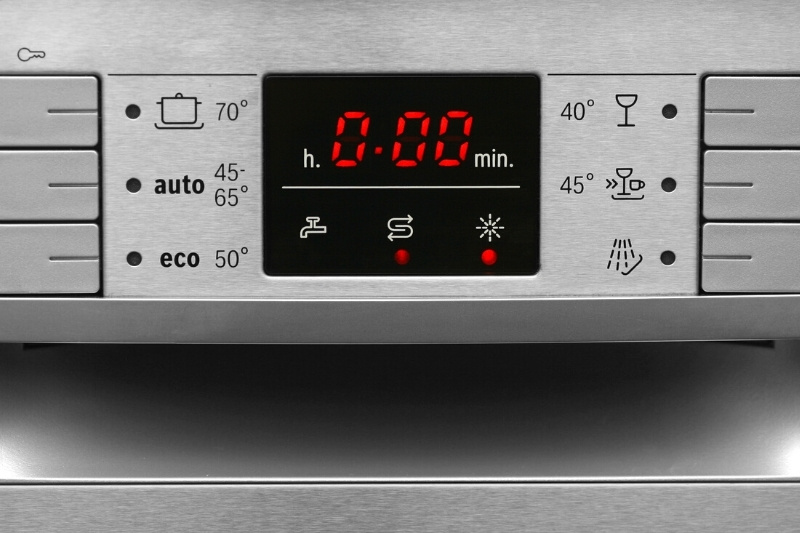Dishwashers are commonplace in most UK homes. However, very few homeowners understand all of their symbols and settings!
To get the most out of your dishwasher, you need to know the meaning of the different functions and alerts.
This enables you to choose the proper cycles for the kitchenware you’re washing and learn how to care for your dishwasher when it’s playing up.
Here we run through all the common dishwasher symbols and settings so you can get to know your appliance better. Discover the full potential of your dishwasher to save yourself time and energy!
Cleaning Programme Symbol
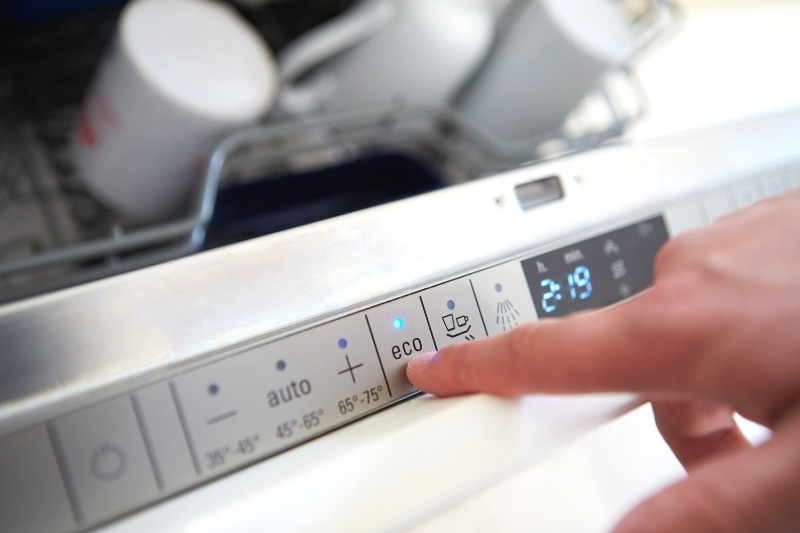
Dishwashers have multiple cleaning programs that run cycles at different temperatures and lengths.
The type of cycle you need depends on the things you’re washing. For example, pots and pans covered in stubborn dried-on foods can go on a more intensive cycle, whereas fragile glasses need a more gentle cleaning program.
All dishwasher brands have their own functions and corresponding symbols. Therefore, you should check the appliance manual to learn more about the symbols for your dishwasher.
Here is a look at the symbols for some general settings seen on many models.
- Eco symbol – This symbol says “Eco” and puts the dishwasher on an economical program. It generally washes at 45 to 55°C and uses less energy and water. The cycle takes longer than usual and is only suitable for removing common food remnants.
- Auto symbol – This symbol says “Auto” and is the ideal function for your daily washing. Temperatures reach 45°C to 65°C, which is suitable for most tableware and crockery.
- 1 hour symbol – Need to wash your dishes in a hurry? The one-hour program beings an hour-long cycle, perfect for removing lightly dried food remnants. It is usually depicted by a “1h” symbol, either by itself or inside a clock.
- Glass 40°C symbol – Either depicted as two glasses or a glass and “40°C”, this dishwasher program uses lower temperatures suitable for fragile items. The drying process is also extended to give your glasses that high-shine finish.
- Intensive 70°C symbol – This symbol refers to a heavy-duty program at high temperatures and increased water pressure, ideal for cleaning off stubborn food remains. The symbol usually depicts pots and pans.
- Express symbol – There are two express symbols on most dishwashers – express 45°C and express 60°C. Both are quick cycles at varying temperatures. They’re either shown by a clock symbol or a forward arrow, accompanied by glasses or pots for low and high temperatures, respectively.
Symbols for Additional Dishwasher Options
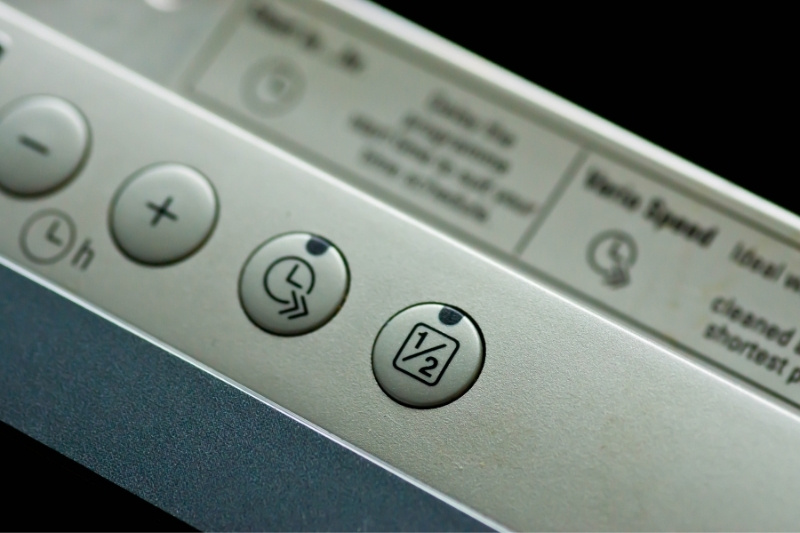
The above dishwasher symbols we’ve just explained refer to the standard cleaning programs.
However, dishwashers are intelligent appliances! Most allow you to modify the programs or add timers and other advanced functions to get the desired results.
These additional options all come with symbols, too:
- Speed adjustment symbol – You can change the length of your dishwasher cycle by clicking on the speed adjustment symbol, shortening the cycle by 20% to 66% depending on the selected cleaning program. It is depicted by a clock with arrows pointing to the right.
- Shine & dry symbol – When in shine and dry mode, your dishwasher adds more water during the rinse phase and extends the drying time. More energy and water are used with this function, so bear this in mind. The symbol is typically a shining wine glass.
- Extra dry symbol – If you want your dishes and crockery to come out of the dishwasher completely dry, turn on the extra-dry mode to extend the drying phase. This setting is illustrated by a symbol of three wiggly vertical lines and a “+” symbol.
- Hygiene symbol – Hygiene mode increases the temperature of the final stage of the washing cycle to protect against bacteria. This is useful for cleaning baby bottles and chopping boards. As such, the symbol is often a baby bottle or might say the word “Hygiene.”
- Half-load symbol – The half-load setting is perfect when you only have a few plates or glasses to wash. It uses less water, and the washing time is reduced. This symbol is easy to identify – simply look for the “½” symbol in a square.
- Intensive symbol – You can recognise the intensive symbol by looking for two rows of vertical lines representing upward spraying water. This function can be added to most cleaning programs. It increases the pressure and temperature to help remove stubborn food remnants.
- Timer setting symbols – Some dishwashers have timers, allowing you to choose when your cycle finishes in the future. This is perfect for busy owners! A clock symbol or “3h”, “6h”, or “9h” usually depicts the timer function.
Status Symbols on a Dishwasher
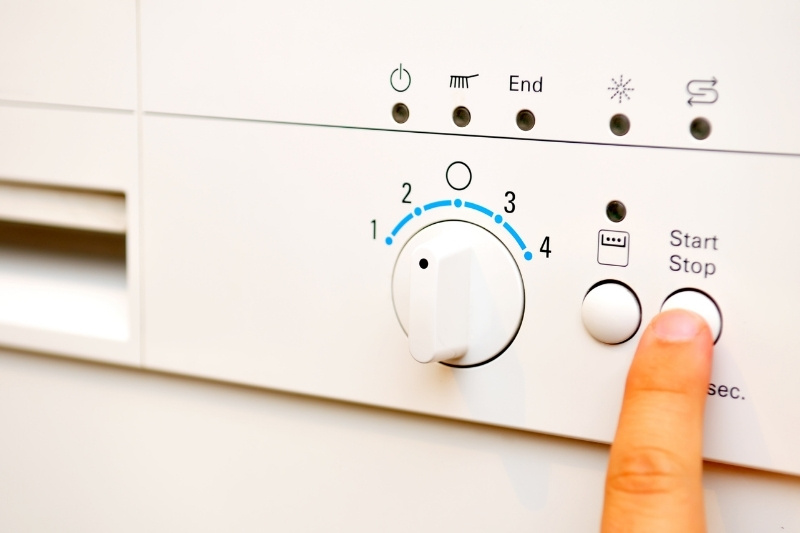
Once your dishwasher runs its washing cycle, various status indicators will light up along the display panel.
These do not require any action; they’re just there to inform you what is happening inside your dishwasher at that moment in time.
The precise indicator symbols on your appliance vary between brands, so it is best to check the appliance manual for more information. However, here are some common symbols you might see:
- Washing symbol – Often represented by a brush, this shows your dishes are being washed. Some appliances will just have an “ON” light rather than a specific symbol for washing.
- Pre-rinse symbol – Depicted by lines (representing water) in a downward direction, sometimes hitting a plate. This indicates that the dishwasher is in its pre-rinse phase, which helps remove stubborn pieces of food.
- Drying symbol – Illustrated by vertical wiggling lines that represent evaporating water. This informs you that your dishes are currently drying.
- Child lock symbol – Child lock settings lock your dishwasher’s door to protect children from potential hazards. A key symbol will often be shown on the display control panel when the lock function is turned on.
Dishwasher Maintenance Symbols
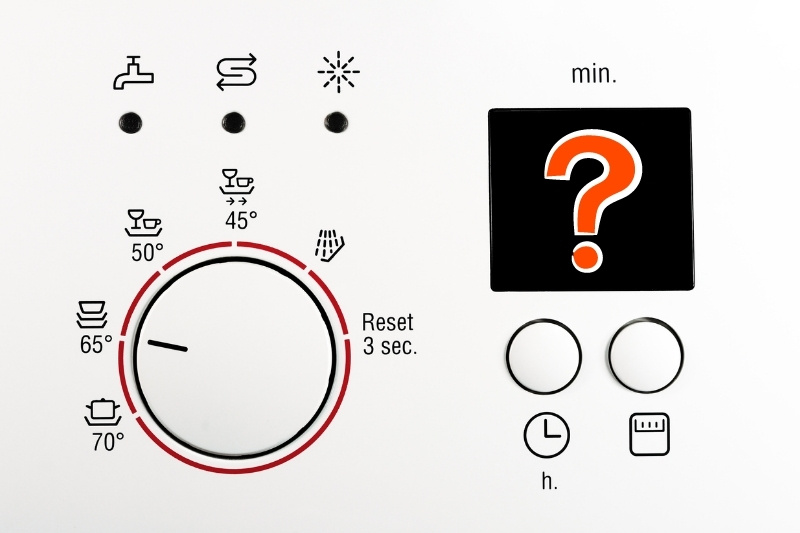
Dishwashers work seamlessly most of the time—load your dishes, choose your setting, and press start. However, dishwashers do need a little maintenance occasionally.
All dishwashers have a machine care symbol, usually depicted as a drawing of the appliance with a star in the top right-hand corner.
You can use commercially available cleaning detergent and set this program to run once per month. This deep cleans your machine to prevent limescale and other dirt and debris from accumulating inside.
You are also responsible for topping up your dishwasher’s rinse aid and salt and checking the water connection.
Thankfully, your dishwasher will inform you when this needs to happen by using symbols. If you notice any symbols below, the appliance needs your attention.
Star symbol
The star symbol on the dishwasher is the rinse aid refill indicator. It is also described as the “snowflake” light, with eight lines extending from a centre point.
You need to refill the rinse aid dispenser when you see this symbol. Rinse aid is a surfactant that prevents spots from forming on your plates and glasses and helps dishes dry faster, giving you better results.
Salt symbol
The salt symbol on your dishwasher looks like an “S” (stands for “salt”) made from arrows. When you see this symbol, it means you must refill the salt container. Dishwasher salt softens the water.
This is important for two reasons:
- It improves the cleaning ability of the dishwasher.
- It prevents limescale from accumulating on glasses and inside your dishwasher.
Tap symbol
If there is a tap symbol on your dishwasher, there is not enough water getting to the appliance. Several issues could cause this, including a pipe blockage, a disconnected water supply, or incorrect mounting.
Check that the water hoses are turned on and properly connected, and call a professional if the tap light is still showing.
What Is the “Dishwasher-Safe” Symbol?
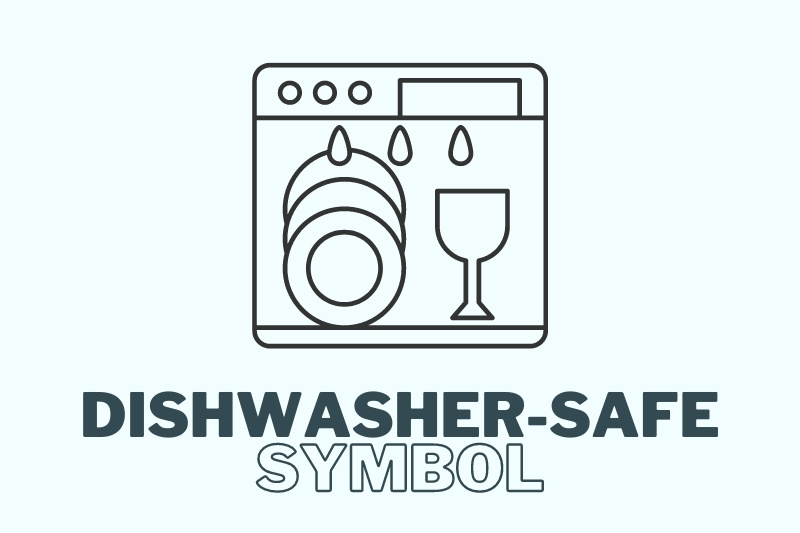
When explaining dishwasher symbols, it isn’t only the symbols on the appliance you need to understand—you’ve also got to know what the “dishwasher-safe” symbols look like, so you know what items can safely go inside your dishwasher.
Unfortunately, there is no officially approved dishwasher-safe symbol. However, many manufacturers include a symbol on their products based on their recommendations.
The symbol is generally depicted as a square box with glasses or plates inside the square. You’ll also see water coming from the top and hitting the plates and glasses, represented as droplets or lines.
The dishwasher-safe symbol is not to be confused with the official food-safe symbol of a wine glass and fork often seen on plastic Tupperware containers.
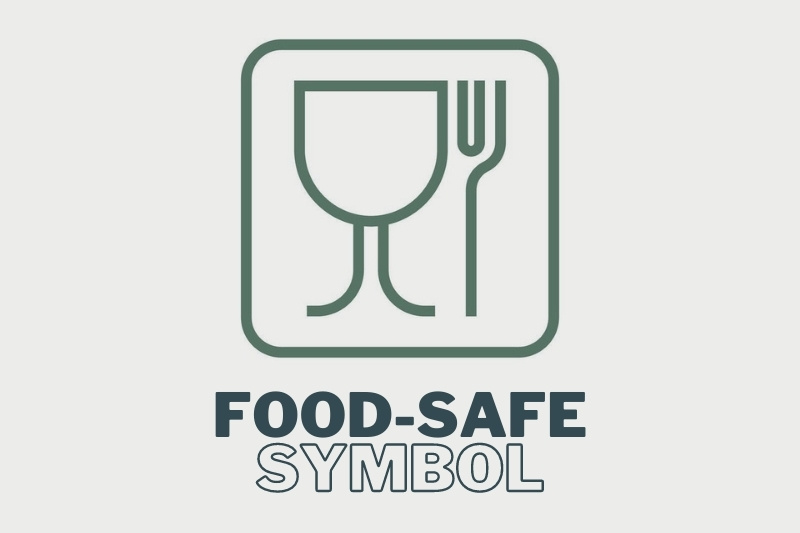

Hannah has a passion for cleaning. She worked her way around Australia by cleaning hostels in exchange for free accommodation and used her cleaning skills to bag a job as a chalet host for a luxury ski company in France.
